- Humanities ›
- History & Culture ›
- Genealogy ›

Genealogy Case Studies
- Genealogy Fun
- Vital Records Around the World
- American History
- African American History
- African History
- Ancient History and Culture
- Asian History
- European History
- Latin American History
- Medieval & Renaissance History
- Military History
- The 20th Century
- Women's History
- Certificate in Genealogical Research, Boston University
- B.A., Carnegie Mellon University
As you sift through the records of your own ancestors to build your family tree, you may find yourself with questions:
- What other records can/should I search?
- What else can I learn from this record?
- How do I pull all of these little clues together?
The answers to these types of questions generally come through knowledge and experience. What is so eye-opening about the research of others, especially if the individuals or places in question have nothing to do with your own family? There is no better way to learn (aside from your own hands-on practice) than through the successes, mistakes, and techniques of other genealogists. A genealogical case study can be as simple as an explanation of the discovery and analysis of a particular record, to the research steps taken to trace a particular family back through several generations. Each one, however, gives us a glimpse into research problems that we ourselves may face in our own genealogy searches, approached through the eyes and experience of leaders in the genealogical field.
Genealogical Case Studies
Elizabeth Shown Mills, genealogist, is the author of Historic Pathways , a website packed with decades of her case studies. Many of the case studies are organized by type of problem—record losses, cluster research, name changes, separating identities, etc.— transcending the place and time of the research, and of value to all genealogists. Read her work and read it often. It will make you a better genealogist.
Some of our favorites include:
- Applying the Preponderance-of-the-Evidence Principle to a Southern Frontier Problem - While "preponderance of the evidence" is no longer used to describe how genealogists analyze and weigh evidence, this is an excellent example of how to document family relationships in situations where no document directly gives the answer.
- The Search for Margaret Ball - Three "burned counties," repeated name changes, and a pattern of migration through several states stumped genealogists researching Margaret Ball for years until Elizabeth Shown Mills came along to widen the net.
- Unraveling Balls of Yarn: Lessons in the Use of a Skeptical Eye - We can each learn from the dangers of assuming that previous researchers have carefully avoided renaming individuals, merging identities, or marrying "people to partners they have never met in real life."
Michael John Neill has presented numerous case study examples online over the years. Here are a few of his favorite case studies.
- Fishing for Clues in John Lake's Estate Michael explores what an estate record can tell us even when none of the deceased individual's children are listed.
- Where O Where is Abraham? How a "missing" 1840 census enumeration was right under Michael's nose.
- Turn the Page Learn how three consecutive deeds were analyzed to reveal a potential relationship among the sellers and the buyer.
Juliana Smith brings humor and passion to everything she writes. You can find many of her examples and case studies in her archived Family History Compass column and 24/7 Family History Circle blog at Ancestry.com , as well as on the Ancestry.com blog.
- Tips from the Trail of Tobin Hatters - Juliana uses passenger arrival records, obituaries, and some more unusual records, and stumbles across some startling surprises.
- Straw Goods, Artificial Flowers, and Feathers: Seeking Common Threads in City Directories - Juliana tackles the daunting task of tracking her Kelly ancestors in New York City directories.
Certified Genealogist Michael Hait has published an ongoing series of genealogical case studies related to his work on the Jefferson Clark family of Leon County, Florida.
More Case Studies
While online case studies provide a wealth of knowledge, many tend to be short and extremely focused. If you're ready to dig in even further, most of the in-depth, complicated genealogical case studies are found published in genealogical society journals and, occasionally, in mainstream genealogy magazines. Good places to start are the National Genealogical Society Quarterly (NGSQ) , the New England Historical and Genealogical Register (NEHGR) and The American Genealogist . Years of back issues of NGSQ and NEHGR are available online for members of those organizations. A few excellent online examples by authors such as Elizabeth Shown Mills, Kay Haviland Freilich, Thomas W. Jones and Elizabeth Kelley Kerstens, can also be found in the Sample Work Products provided online by the Board for Certification of Genealogists.
- Family Tree Lesson Plans
- Free Online Genealogy Education Sources
- Top 10 Genealogy Mistakes to Avoid
- 10 Steps for Finding Your Family Tree Online
- Resources for Researching Local History
- Making a Living from Genealogy
- Organize Your Digital Genealogy Files
- 8 Rules for Properly Recording Names in Genealogy
- 5 Family History Scams to Avoid
- How to Organize Your Genealogy Files
- 10 Top Genealogy Questions and Answers
- Creating a Genealogy Research Plan Like a Detective
- How to Open a GEDCOM file in Your Genealogy Software
- 10 Genealogy Blogs Worth Reading
- Top Genealogy Magazines for Family History Enthusiasts
- How to Create a Genealogy GEDCOM File

ADVERTISEMENT

Case Study: 6 Steps for Handling Surprises in Your DNA Results
How do you handle shocking news about your DNA? One woman shares how she worked through the complex emotions of discovering she was conceived via a sperm donor.
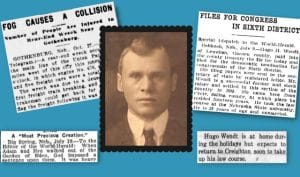
Case Study: Using Newspapers to Reconstruct an Ancestor’s Story Premium
Learn what newspapers can do for your research in this case study, in which they help reconstruct a long-forgotten ancestral history.

How to Handle Family Secrets and Surprises in Your Genealogy Premium
These seven genealogists made peace with difficult pieces of their family history: black sheep ancestors, infidelity, slavery and other emotional topics.
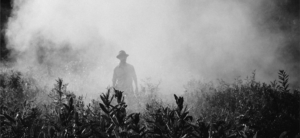
Stories to Tell: Mysterious Coincidences Premium
A genealogist looks into an ancestor's life after a series of mysterious coincidences. Find out how Tierra Cotton-Kellow "met" her second great-grandfather.
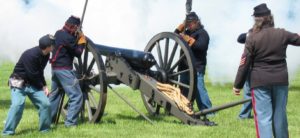
Stories to Tell: Owning a Piece of the Past Premium
A veteran and military history buff reconnects with his Civil War ancestors.

Case Study: Discovering a New Sibling Through DNA Results
An expected close relative led to an astonishing DNA discovery, giving one researcher a new sibling—and information on a long-hidden wartime romance.
Sign up for the Family Tree Newsletter
Plus, you'll receive our 10 Essential Genealogy Research Forms PDF as a special thank you!
Get Your Free Genealogy Forms
" * " indicates required fields

Case Study: Adding a New Grandfather
One researcher grapples with a family secret unearthed by DNA test results—and how it might explain another family tragedy.

Case Study: Conflicting Birthdates in Genealogy Records Premium
Conflicting birth dates can be especially difficult to resolve. Here is a case study and tips from genealogy expert Sunny Morton.

Stories to Tell: Going Home Premium
An old diary comes alive when a genealogist visits his family’s 200-year-old homestead.
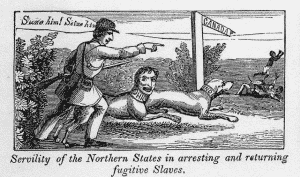
Case Study: Research Clues from Understanding Slavery Law
The free “Slavery in America and the World” digital library at Hein Online has surpassed a million pages. Here's one example of how understanding slavery law can reveal clues for your genealogy research.
Case Studies as Genealogy Learning Tools
It's no wonder that when Legacy Webinars announced their most-watched webinars for 2023, Elizabeth Shown Mills featured prominently. Aside from the opportunity to learn from an expert in the field, she teaches by example. Many of the webinars she and other speakers from that list provided were based on case studies. Case studies aren't just popular as webinars; they are essential to our genealogical education and research. Why?
How do we, as researchers, learn how to do better research? Some of the ways we know might include reading or taking courses in methodology. Working on our research, learning by doing is also essential. Case studies are another way to learn as we go beyond a knowledge of common record sets and focus on problem-solving. It's through hearing the experiences of others that we can learn to do better research.
You might wonder how you could learn anything from a case study focusing on a location like New England when your research focuses on Spain. Genealogist Kimberly Powell wrote in her article on Genealogy Case Studies:
What is so eye-opening about the research of others, especially if the individuals or places in question have nothing to do with your own family? There is no better way to learn (aside from your own hands-on practice) than through the successes, mistakes, and techniques of other genealogists. A genealogical case study can be as simple as an explanation of the discovery and analysis of a particular record, to the research steps taken to trace a particular family back through several generations. Each one, however, gives us a glimpse into research problems that we ourselves may face in our own genealogy searches, approached through the eyes and experience of leaders in the genealogical field.[1]
Choosing webinars based on the speaker or how closely the topic matches what we are researching is not unusual. However, with case studies, we want to consider how the presenter solved the problem. What steps did they take? What questions did they ask? Where did they go for answers? Asking those questions means that the places and surnames may be inconsequential. Our focus is the steps the researcher took.
In a recent Legacy webinar I listened to by Gary Ball-Kilbourne PhD, CG titled The Many Wives of Howard William Lowe: Working with Social History to Glean Genealogical Insights his subject married five times. One of the marriages ended in the spouse's death but what happened in the others? Divorce is an obvious answer, but he didn't find the divorce records he expected to. So, he used social history to better understand how couples ended marriages in that time period. He understood that he needed to look beyond his understanding of modern marriage and divorce and instead look at the time period. His research into that question provided the answer. His research and handout are a must for others who exhaust traditional records sources and need to understand an era and location better.
It's easy to discount case studies, whether written or presented. They aren't necessarily "entertaining," and they may seemingly have nothing to do with your research because they are focused on a different location and surname. But that's not the point. Case studies help us better understand how to solve problems. They are the reason we read genealogy journals such as The National Genealogical Society Quarterly and listen to presenters' explain their research. As we choose what case studies to attend, consider what the presenter's research question is and how they found that answer. Use their handout to read more and possibly pick up sources to help your research.
Gena Philibert-Ortega is an author, instructor, and researcher. She blogs at Gena's Genealogy and Food.Family.Ephemera . You can find her presentations on the Legacy Family Tree Webinars website .
Comments (0)
Your email address will not be published. Required fields are marked *
Save my name, email, and website in this browser for the next time I comment.
Subscribe to Newsletter
Keep up to date on the latest webinars, software tips, and promotions by joining our newsletter.

Replays of BCG’s Reisinger Lecture Series now online for limited time
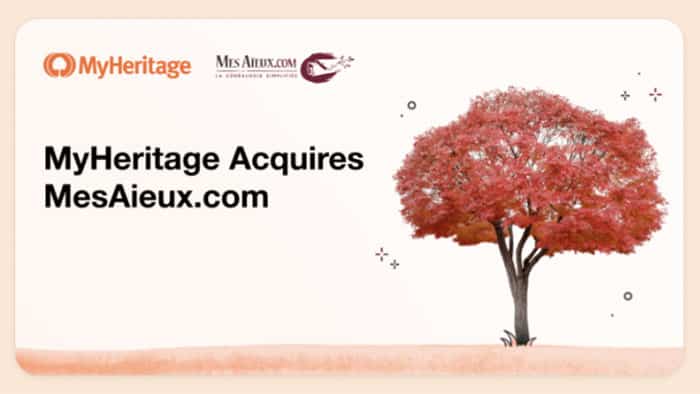

MyHeritage Has Acquired MesAieux.com
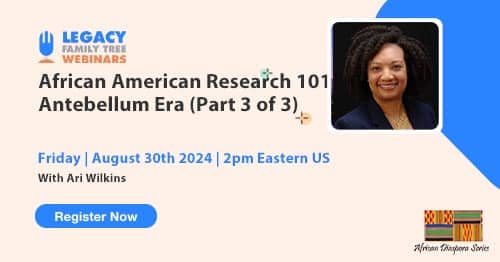
Register for Friday’s African Diaspora Series webinar: African American Research 101 – Antebellum Era (Part 3 of 3) by Ari Wilkins
- International Versions
- Knowledge Base
- Subscribe to Our Newsletter
© 2024 MyHeritage Legacy Family Tree. All Rights Reserved.
How to Build a Family Tree
How to build a family tree: tracing your ancestors.
Your decision to start a family tree will take you on an interesting journey back through time. As a time traveler, your journey will begin with your life. Go back to your birth record and start to note the details of where you were born, the date, your parents full names, and be sure to include your mother’s maiden name. Next record details of places you have lived, your schooling, marriage, and children. Then begin to work back further and research your parents’ lives. (There is probably much about them that you don’t know.) Building a family tree can be a wonderful activity to share with your parents and grandparents—and if you are very lucky—a great-grandparent.
Your children or extended family may be interested now or in the future in researching their family tree, so be sure to record your findings carefully in a permanent place for everyone to enjoy long after you too have become an “ancestor.”
Linking generations, setting each in its unique historical perspective, brings them to life again for everyone.
Identify What You Know and Use Home Sources
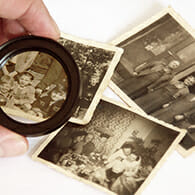
- birth, baptismal, graduation, marriage, military, and occupational records
- death certificates, burial records, and obituaries
- yearbooks, newspaper articles, family letters, social activity mementos, sports awards, and other documents that might provide names, dates, and locations
Then look at your family’s religious records, old letters, photographs, and memorabilia. Print copies and label everything to document the source, and scan them when possible to save them digitally. Now you are well on your way to forming the branches of your family tree.
Next, contact family members and ask questions about their lives and those of other relatives. Interview all your oldest relatives first. Most of us later regret not doing that in time to learn from them. A sampling of questions might include the following:
- Where did they live?
- In what part of the country?
- What kind of dwelling did they live in?
- Did they move around while growing up?
- When and where were their relatives born?
- When did these relatives die, and where are they buried?
Take along some of your old photos and attic treasures to jog their memories. And be sure to ask if you may see their old family records, letters, photos, and memorabilia. These documents might help you expand your search. Take photographs of their mementos, records, and photos with your camera, phone, or bring a portable scanner. Document the photos you take with names, date, and place.
Listen to their family stories and make notes. Relatives often have different versions of the same story since each person remembers an event in his or her unique way, but these differences make it interesting! Share what you already know with them. Use a tape recorder or video camera if your relative feels comfortable with it—most mobile phones can make audio and/or video recordings today. Make your initial visits short with someone you are just getting to know. Always ask for permission first before you make copies and take photos, videos, or audio recordings.

Record and Document Your Information
After collecting family information, it is important to record it correctly on forms referred to as family group sheets and pedigree or ancestor charts (download a free fillable NGS Pedigree Chart and NGS Family Group Sheet ). Fillable forms let you type into them and save them digitally.
Be sure to indicate a source for each fact. Your goal is to document the details fully so you can pinpoint exactly where to find the records again. Then file the information in an organized way so that you can locate each individual in your ever-expanding collection. The best way might be to create a folder for each one (either on your computer or in your file cabinet) and include old photos of them, their families, homes, and cemetery markers, plus their important documents, letters, and memorabilia. Add their stories—both those you heard as a child and those family members tell you.
Two books can help you fully understand how to document your genealogy work:
- Mastering Genealogical Documentation , a NGS workbook by Dr. Thomas Jones, PhD, CG, CGL, FASG, FNGS, FUGA
- Evidence Explained by Elizabeth Shown Mills, CG, CGL, FASG, FNGS, FUGA
Prepare Yourself to Build a Strong Tree
The best way to start your family history and build a strong tree is to learn the basics of genealogical methodology.
- Purchase “how-to” books. One such book is the NGS publication Paths to Your Past: A Guide to Finding Your Ancestors, 2018 Edition . Within its pages, readers learn about research techniques and sources. A great starting place!
- Then more in-depth is the “how-to” book, The Researcher’s Guide to American Genealogy, 4th Edition, by Val D. Greenwood. It will be another great addition to your genealogy book collection. This is a comprehensive textbook with examples of case studies.
- If you are an NGS Member, please take the free course that comes with your membership called Family History Skills .
- Next, NGS members and non-members will benefit from enrolling in NGS’s Foundations in Family History education program, start with the Foundations 101 course and also consider the CGS course: Guide to Documentation and Source Citation course.
Decide What You Want to Learn
Pick an individual about whom your information is incomplete. For example, if you are missing information about one of your four grandparents, start with her or him. Try to obtain death, marriage, and birth records if available. Always work backward from the known to the unknown.
Step One: Vital Records Will Be Most Helpful
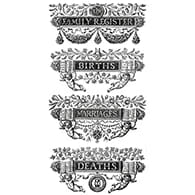
- divorce records
Most U.S. states have kept modern vital records since the beginning of the twentieth century. States that were part of the original thirteen colonies are the most likely to have pre-1880 vital records and church records available. Publications such as The International Vital Records Handbook , 7th Edition, and the booklet titled Where to Write for Vital Records provide records descriptions, addresses, and other helpful information. There is also a digital 2014 version available on the Slideshare website from the Division of Vital Records .
Do a Google search for websites for each state archives to learn more about accessing vital records in a particular state.
The FamilySearch Wiki also offers a state-by-state outline of where to find various records for each state. Enter the country, state, or county name in the “Search by place or topic” box or click on the map.
Church and religious records for baptisms and marriages are often substituted for civil vital records before civil vital records were uniformly collected. The best way to find religious records is to search in the county where the ancestor lived. Use a search engine like Google or WorldCat and use a search term with a county and state name, plus a religious denomination, as in “Methodist church and Franklin County, NY”. Also check with a library, genealogical, or historical society where your ancestor resided for advice on where to find historical records for the religious denomination of interest.
Census Records from 1940 back to 1790
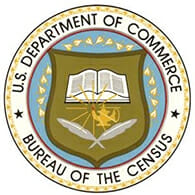
- Ancestry (the free library edition, which contains census images, is available on site at many libraries and genealogical/historical societies, as well as at LDS Family History Centers)
- FamilySearch (free access from home once you sign up for a free account; all census images, innumerable other databases, and collaborative family trees)
- Findmypast (free at many libraries and LDS Family History Centers )
- MyHeritage (free library edition is available at some libraries and at all LDS Family History Centers)
- HeritageQuest (available at most libraries across the United States, many of which offer free digital access from home for many Ancestry databases, including census records, through your library card)
Census records can also be viewed on site at the National Archives and its branches .
State Census Records
Many states collected census information from their residents (and also what is called census substitutes) before 1790 or for particular years in-between decennial federal census surveys. The FamilySearch Wiki is a good source to consult for the full complement of records available, state-by-state.
The thirty-one Research in the States guidebooks from NGS also provide excellent record sources beyond federal censuses.
City Directories
City directories are directories that preceded telephone books, which were organized to find people and businesses . They arose from a need for businesses to contact customers, customers to find businesses, and for residents to find one another. Listings for individuals are organized alphabetically by surname and give a home residence and often an occupation, and place of business. Sometimes a listing will include the wife’s name and older children who may have been working.
City directories began to appear right after the American Revolution in larger cities and eventually spread to counties and towns. They were published yearly in most locations. By the mid-1930s they were discontinued in favor of telephone books and Yellow Pages. City directories are an excellent way to track the movements of people between census years and to separate people with the same name by using addresses and occupations as identifiers.
The best source for discovering early city directories is Dorothea Spear’s Bibliography of American Directories through 1860 . The Library of Congress has a full set of all copyrighted directories on microfilm or microfiche (and most directories are copyrighted). Internet Archive and the New York Public Library have been digitizing vast numbers of directories from microfilm, so check their websites for free access to digitized directories now online. Miriam J. Robbins’ free website Online Historical Directories is a growing compilation of online city directories throughout the United States.
The FamilySearch Library has a comprehensive collection, including pre-1860 directories—search the catalog by [STATE], [COUNTY], [TOWN] – DIRECTORIES or click on the state name at the bottom of their United States Directories page . Ancestry, Fold 3, and other genealogy subscription services have more limited but useful collections of city directory records. Libraries often subscribe to databases such as these and may offer additional electronic resources with city directories that are free for patrons. Consult a reference librarian locally for more resources available to you.
The Courthouse
Having collected the basics about your ancestors, you are now ready to visit or contact the courthouse in the locality where your ancestor(s) lived. Wills, probate, and land records are useful for adding information about an ancestor’s life and family relationships, especially pre-1850 when other records may not exist. Call ahead to find where the records are housed as many older records are moved to other repositories if a courthouse runs out of room. At the courthouse itself, in the town or county archives, or in a local library, you may discover:
- land records and deeds
- surveys and
- other records
The Handybook for Genealogists and Red Book: American State, County & Town Sources can help provide addresses.
If you cannot go to a courthouse in person, search the internet. Many town or county offices have digitized at least some of their records and made them available online. Check the local historical societies and the state archives to see if older records have been transferred there. Another option is to consult digitized microfilm of courthouse records on FamilySearch.org or see if a local FamilySearch Center still has microfilm for the needed county court records. You may also consider a visit to the FamilySearch Library in Salt Lake City (see below).
Library and Archives Research
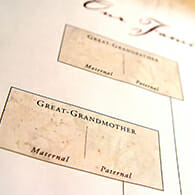
NGS Book Loan Collection
If you cannot get to a genealogy collection or your library doesn’t have the book you want, ask if interlibrary loan (ILL) is available. The NGS Book Loan Collection , held by St. Louis (Missouri) County Library, offers interlibrary loan service to send books in the NGS collection to your local library, for your use. There are more than six thousand genealogies among the twenty thousand books in the collection, many of them circulating. This collection is open to everyone. If the book does not circulate, contact the library staff, they may be willing to copy specific information for your research needs.
Online Newspapers
Vintage and contemporary newspapers are being digitized continuously around the country. They can hold intimate details of our ancestors’ lives such as
- a birth announcement
- the story of a runaway bride
- a big family reunion
- the celebration of 50 years of wedded bliss
- a death notice or obituary
- trouble with the law
- community involvement or political roles
There are many free collections, starting with the Library of Congress newspaper collection, Chronicling America . Check Miriam J. Robbins’ state-by-state list of free United States Online Historical Newspapers . Look for local newspapers in the areas your ancestor lived. Many historical societies have preserved copies of early newspapers.
Subscription databases that offer online historical newspaper collections such as Ancestry, Newspapers.com, FindMyPast, Genealogy Bank, and others, might be available at no cost if your local library has a subscription.
Foreign-language newspapers can be particularly helpful because the obituaries they print often mention the village of origin of the deceased. These newspapers covered the communities they served more intimately, so obituaries tended to be far more expansive than those printed in English-language newspapers for the same person.
If a particular newspaper important to your family research has not been digitized yet, it may be worthwhile to seek out the microfilm or original print copies as an alternative.
FamilySearch Centers
The Church of Jesus Christ of Latter-day Saints has microfilmed
- vital, land, probate, tax, and military records;
- state and federal censuses;
- periodicals;
- family and local histories; and
- numerous special collections from all over the world
Many are housed in the FamilySearch Library (formerly the Family History Library) in Salt Lake City, Utah. Some of these vast holdings are available in digital form through the FamilySearch.org website and some on microfilm at the FamilySearch Library, or the more than five thousand FamilySearch Centers or Affiliates located throughout the United States and the world. Call your local center to get an idea of their holdings. The FamilySearch Library in Salt Lake City is worth the trip to access their full collections in one place. It is an accessible, easy to navigate city.
Genealogical Societies
Family history researchers should consider joining NGS and a local society.
NGS members receive outstanding publications and discounts on the following NGS items
- online store purchases
- research trips
- fees for the annual NGS Family History Conference
NGS members learn from
- how-to and methodology articles,
- online courses and resources,
- conference sessions, and
- social and digital media offerings
Another less tangible benefit of NGS membership is the camaraderie that our members experience with other like-minded family historians they meet through NGS—either through online educational courses, research trips, or in person at our yearly conferences.
Local society membership can be very helpful if they hold regular meetings with lectures and can give you guidance on local records. Consider joining a society for the area in which you are researching.
Learning More
At this point you have been working mostly on your own. You will probably benefit greatly from taking a more formal genealogy course.
NGS offers courses that provide you with the freedom to learn from home. The NGS Family History Skills online course—free to NGS members—is a good starting point for how to build a family tree. Next, investigate NGS’s building-block-study-program called Foundations in Family History , made up of three progressive parts:
- Foundations 101
- Foundations 102
- Foundations 103
With Continuing Genealogical Studies, NGS also offers courses on specific topics you will want to learn more about. The thirteen course topics include
- DNA and Genetic Genealogy
- land and deed records
- military records
- documenting your work and adding citations
- reading old handwriting and transcribing documents
Make sure you take time to go through the entire NGS Learning Center . You will find lots of details about our
- online courses,
- annual NGS Family History Conference,
- genealogy related books, and
- research trips.
You will also learn about our genealogy publications, including:
- the scholarly journal with case studies, the National Genealogical Society Quarterly
- NGS Magazine , which offers a wide variety of the most up-to-date topics and resources and
- NGS Monthly , a digital publication to help you learn about resources and methodology for research
And if you are looking for answers to questions or making connections with other genealogists, NGS offers FORUM , an online platform for its members. Its a great place to connect with others around the US and the world, share knowledge, and solve genealogical problems.
Also available are many, many Free Genealogy Resources . NGS has been building a repertoire of personalized learning tools so that everyone can learn in a way that suits them, and at every skill level.
NGS. Build Your Skills. Build Your Family Tree.
Sign up for our Upfront with NGS blog or our NGS Conference blog .
© 2018 National Genealogical Society. Complimentary articles are for personal use only and may not be copied or used for commercial purposes. All rights reserved and require written permission from NGS.
Welcome to the National Genealogical Society. Login or create a free account.

IMAGES
VIDEO
COMMENTS
These measures will help you get the most out of the records you find, resolve conflicting information, and most important, make sure you’re tracing the right family. Let’s put them into practice as we examine the best approach to common, confusing genealogy research cases.
A genealogical case study can be as simple as an explanation of the discovery and analysis of a particular record, to the research steps taken to trace a particular family back through several generations.
Here are some key principles for determining whether or not family stories are true, explained through three case studies from my own research. If you’re not sure if a family tale is true, here are four steps to systematically evaluate the evidence. Case 1: Mistaken Stories About Ethnic Origins.
Case Study: Discovering a New Sibling Through DNA Results. An expected close relative led to an astonishing DNA discovery, giving one researcher a new sibling—and information on a long-hidden wartime romance. Read More.
A genealogical case study can be as simple as an explanation of the discovery and analysis of a particular record, to the research steps taken to trace a particular family back through several generations.
Learn how to build a family tree as you trace your ancestors, a free tutorial from the National Genealogical Society (NGS). Learn step by step how to gather and record your family’s history and the best sources for tracing your ancestors.